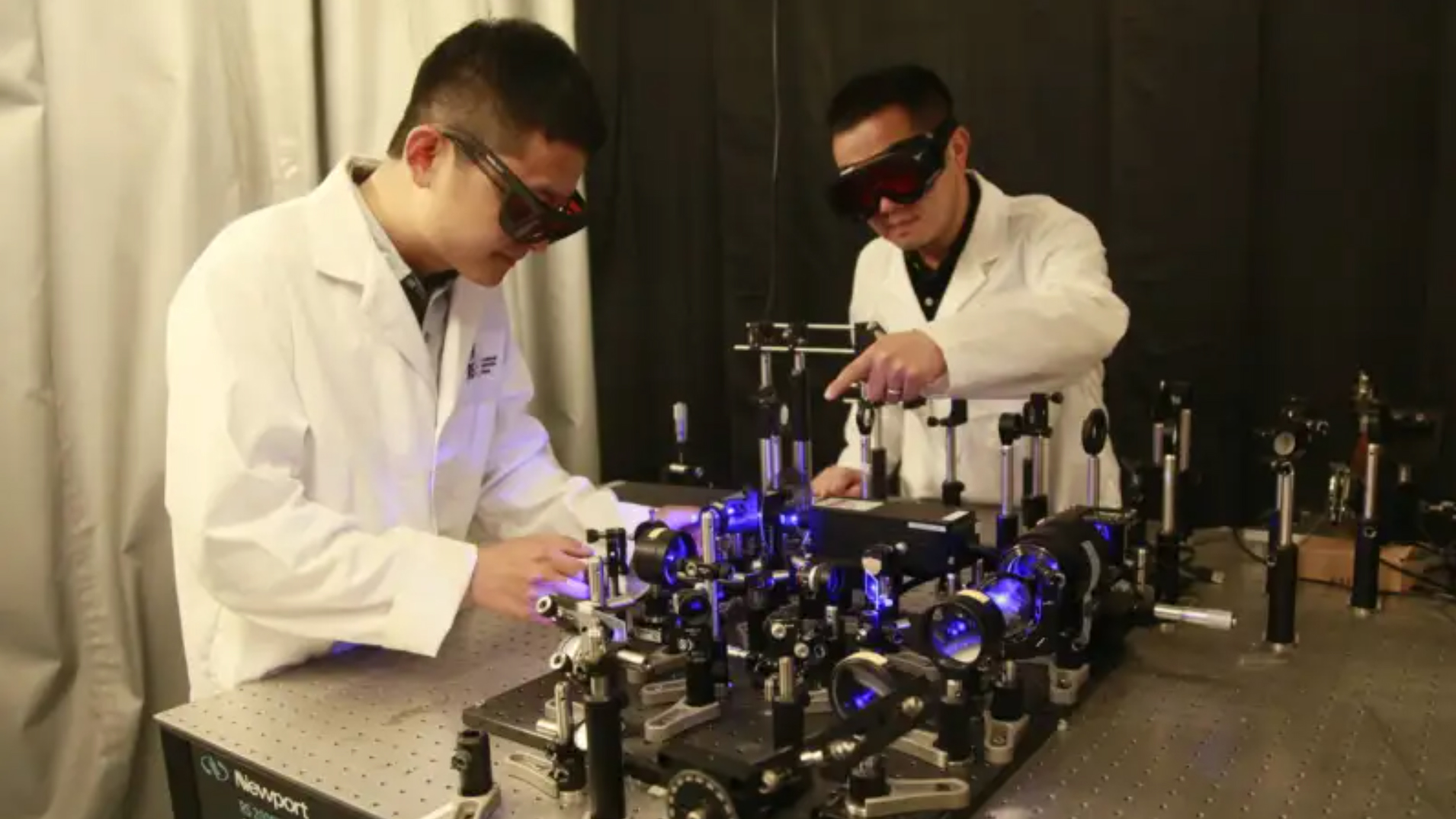4.8 million frames per second – for just ⅒ the price of other ultra-fast cameras
A new cost-cutting 4.8 million fps (!) camera makes ultra-fast imaging more accessible, using parts from projectors

Capturing high-speed events, like falling water droplets or molecular interactions, typically requires expensive ultra-fast cameras. However, a breakthrough by researchers offers a more affordable solution for various applications – including real-time drug delivery monitoring and high-speed LiDAR systems for autonomous vehicles.
In a recent paper in scientific journal Optica, Jinyang Liang of Canada's Institut National de la Recherche Scientifique, with Concordia University and Meta Platforms, unveiled the Diffraction-gated Real-time Ultra high-speed Mapping (DRUM) camera. It achieves imaging speeds and resolutions like costly high-speed cameras at a fraction of the cost, capturing dynamic events in a single exposure at 4.8 million frames per second.
• Check out the best cameras for sports photography – lightning-fast for capturing every moment
Liang's team demonstrated this by imaging laser pulses at a femtosecond – that's one quadrillionth (one millionth of one billionth) of a second – interacting with liquids and biological samples undergoing laser ablation.
"DRUM photography will advance biomedicine and automation technologies like LiDAR, enhancing hazard sensing without compromising sensor sensitivity," said Liang.
As explained by Phys.org, DRUM camera's cost-effectiveness and speed result from a novel technique called time-varying optical diffraction. Traditional cameras use gates to control light sensor exposure, similar to a shutter; in time-gating, the gate rapidly opens and closes before the sensor reads data, creating a high-speed movie.
Liang and his team took advantage of the space-time duality of light, and devised a method to achieve time gating using light diffraction. By rapidly changing the tilt angle of a diffraction grating, which generates multiple copies of incident light traveling in different directions, they could gate frames at different time points and assemble them into an ultra-fast movie. Importantly, they accomplished this using a digital micromirror device, a component commonly found in projectors, in an unconventional and cost-efficient manner.
Get the Digital Camera World Newsletter
The best camera deals, reviews, product advice, and unmissable photography news, direct to your inbox!
The DRUM camera captures seven frames per short movie. Tests recorded laser interactions with distilled water, displaying plasma channel evolution and bubble formation in response to a pulsed laser. It captured bubble dynamics in a carbonated drink, and interactions between an ultra-short laser pulse and a single-layer onion cell sample. DRUM photography extends to nano-surgeries and laser-based cleaning applications.
Researchers aim to enhance DRUM photography by increasing imaging speed and sequence depth, exploring color capture and applying it to advanced LiDAR systems and more. This may not be a technology that ever benefits the bursts and frame-rates of consumer cameras, but it's still a fascinating development in the science and technology behind ultra-fast photography.
Our guide to the best projectors for video explains more about micromirrors, and you can check out the best microscopes for viewing things smaller than the eye can see.

Having studied Journalism and Public Relations at the University of the West of England Hannah developed a love for photography through a module on photojournalism. She specializes in Portrait, Fashion and lifestyle photography but has more recently branched out in the world of stylized product photography. Hannah spent three years working at Wex Photo Video as a Senior Sales Assistant, using her experience and knowledge of cameras to help people buy the equipment that is right for them. With eight years experience working with studio lighting, Hannah has run many successful workshops teaching people how to use different lighting setups.
